Mittlefehldt
Established Member
I did a shop made mallet recently and the handle on it would make Alf's look like Duncan Phyffe himself made it, but it was my own and made from bits and bobs about the shop.

Hi Rob,woodbloke":2l2nxw06 said:If I've upset or offended folks on the forum, then aplologies are in order. Its just my own personal point of view that I can't get it into my pea sized brain that a standard component like a hammer handle needs to be produced when a perfectly acceptable, machine made, functional, shop bought product in the same material, is available to me locally. If the handle was a 'special' or I wanted to make it in an alternative timber then, fair enoughski. 'Nuff said on this one, going to make a brew - Rob




Bernhard":czrzj57w said:Hi Alf,
nice and detailed report. Who ever even tried to fittle a broom-stick knows that this is not so easy.
I admit that I prefer to buy the hammer stickreason is lack oftime and hickory.
Now my question: is it also important to follow the rule like an axe handle. I was told that the left side of the tree needs to be set to the front (or vice versa)?
Thanks for sharing
Bernhard
stairman":2z7bhwbm said:Been giving this some thought (yes it hurt)maybe it has to do with the growth rings as they can vary in width in difrant parts of the tree So the right side mite be the widest / narrowest rings (started on the pain relief (my this wine tests nice))
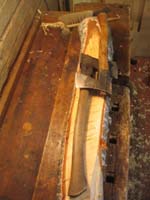
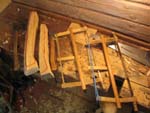
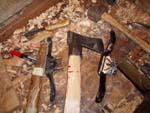
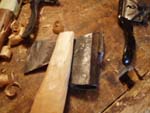

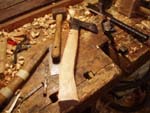
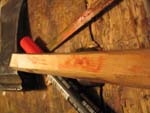
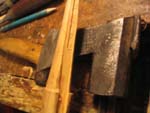
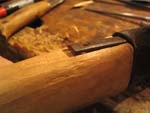
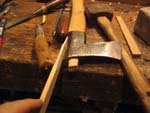
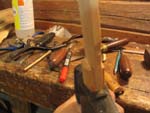
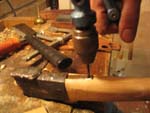
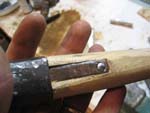
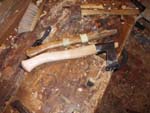

Pekka Huhta":omr38em7 said:This is just my intuitive guess why: Sapwood is more elastic than heartwood. Back side of the handle is pressure side and the more elastic sapwood will compress a bit more when hitting than heartwood would if it was on the backside. This gives a bit of flex to the handle to prevent it "kicking back" when you use the axe for splitting or other heavy hitting.
Pekka
Bernhard":m67imxka said:stairman":m67imxka said:Been giving this some thought (yes it hurt)maybe it has to do with the growth rings as they can vary in width in difrant parts of the tree So the right side mite be the widest / narrowest rings (started on the pain relief (my this wine tests nice))
That was exactly the explanation given. Can´t recall which side to show to the face. Sorry if the wording right and left side of the tree is not common in England. We call right side the side which shows to the center.